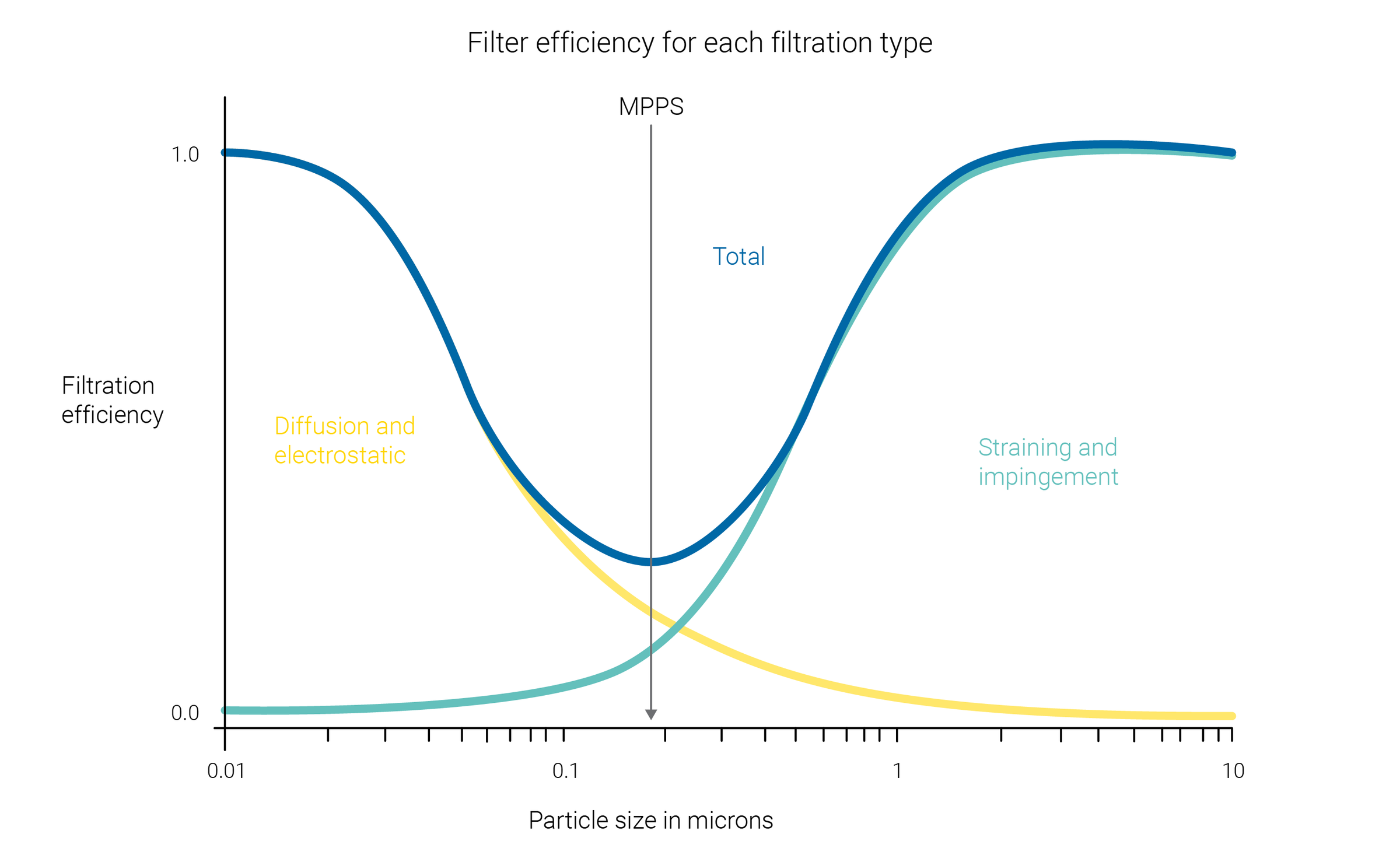
Autor: Uwe Scherzer, Caroline Brown
Datum: 18.03.2020
Does a High Efficiency Particulate Air (HEPA) filter offer full protection against viral cross‑contamination?
Sizes of virus particles
Particulate matter (PM) in the air, whether in solid or liquid form, can affect our health. Particularly those particles below 2.5 micrometers (also known as microns; μm) represent a hazard, as they are able to enter our bloodstream. Nanoparticles can be as small as 0.1 right down to 0.001 μm.
Sizes of some well‑known bacteria and viruses are as follows:
- Influenza A virus: 0.08 ‑ 0.12 μm
- HIV: 0.08 μm
- Hepatitis C virus: 0.05 μm
- Mycobacterium tuberculosis 1.0 μm
The very common staphylococci (e. g. staphylococcus aureus) are spherical cells of about 1 μm that grow in clusters.
The coronavirus species COVID‑2019, MERS‑CoV and SARS‑CoV range in size from 0.06 to 0.2 μm.
How do HEPA filters work?
It is widely believed that HEPA filters are only capable of capturing particles sized 0.3 μm or larger. However, this belief is based in part on an incorrect understanding of how HEPA filters work. The fact is that particles of around 0.3 μm are the hardest to catch (
For larger particles, the HEPA filter acts like a net as we would expect. Particles greater than 0.3 μm in size simply cannot get through: either they do not fit through the holes or they hit the filter fibers due to inertia. For smaller particles, on the other hand, it would seem logical that they can simply go through the holes. However, this is not the case. The tiny mass of particles less than 0.3 μm means they do not fly straight; instead, they are bounced off other molecules as they collide with them and thus move in completely random patterns. As a result, they hit the filter fibers and then remain stuck in them. This is the principle of Brownian movement.

Efficiency and classes of filters
Tests carried out by the NASA (
According to European standards, there are 17 classes of filters ‑ the higher the class, the greater the efficiency. Classes E10 to E12 are Efficient Particulate Air (EPA) filters, H13 and H14 are HEPA filters, and U15 to U17 are Ultra Low Penetration Air (ULPA) filters. These classes are covered by the European standard EN 1822, which assesses the filtration performance of the filter for the MPPS. According to this standard, a HEPA filter must remove at least 99.95% of particles sized 0.3 μm or larger (
Fußnoten
Referenzen
- 1. Perry J.L., Agui J.H., Vijayakumar R. Submicron and Nanoparticulate Matter Removal by HEPA‑Rated Media Filters and Packed Beds of Granular Materials. NASA/TM‑2016‑218224 https://ntrs.nasa.gov/archive/nasa/casi.ntrs.nasa.gov/20170005166.pdf
- 2. European Standard EN 1822‑1:2009, "High efficiency air filters (EPA, HEPA and ULPA)", 2009
- 3. American Society of Mechanical Engineers, ASME AG‑1a‑2004, “Addenda to ASME AG‑1‑2003 Code on Nuclear Air and Gas Treatment”, 2004



